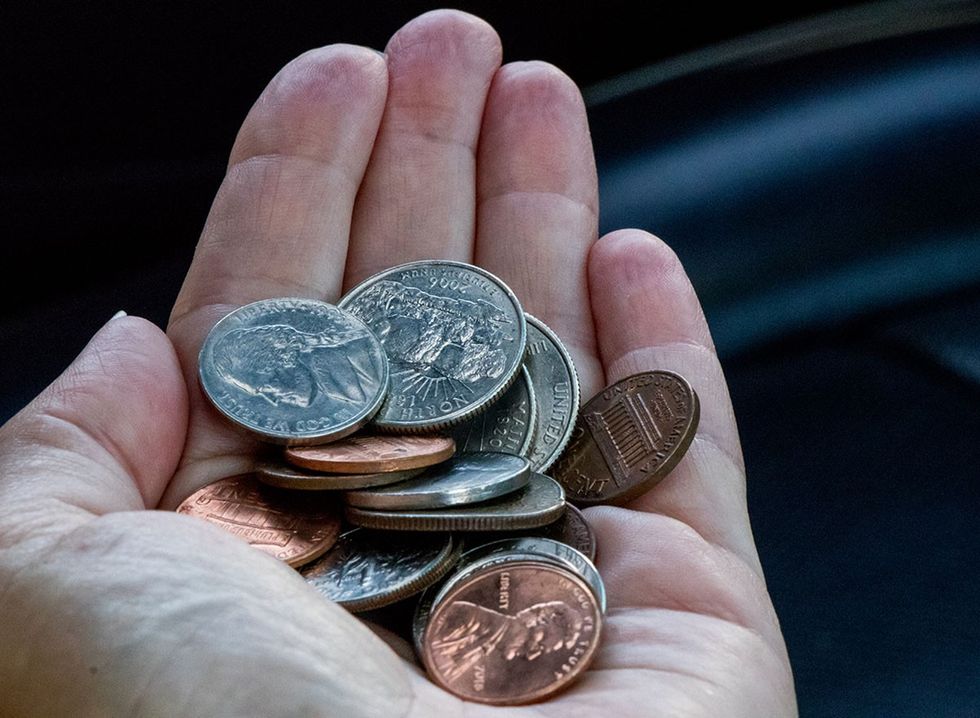
There are legitimate reasons for using a credit card, such as building credit or earning rewards and travel miles. However, credit card spending can easily get out of control. Collectively, Americans owe $1.166 trillion in credit card debt, according to the Federal Reserve Bank of New York, which is up from $1.142 trillion in the second quarter of 2024.
Bad shopping habits can be hard to curb, but a credit card ban helps evaluate unhealthy spending and reset budgeting and financial goals. David Delisle, Personal Finance Expert and Author of The Golden Quest, stopped using credit cards for a month to see how his spending behavior would change by using cash. “The hope was that I would be a little more mindful and reflective and spend less for those 30 days,” he says. He shared the results with Best Life, and this is what happened to his budget.RELATED: How to Spot a Credit Card Skimmer.
Paid With Cash Often

These days, it’s impractical to pay for everything in cash. Things like streaming services, apps, and other subscriptions automatically charge your cards, but Delisle paid cash whenever he could. “In this day of technology, some things are impossible to pay for with cash. In those instances, I would still use a credit card, but whenever it was possible to pay with cash, I did,” he says.
Cash is a Hassle

People rely on their plastic so much that having cash is a headache. “By far the biggest challenge was convenience,” Delisle shares. “Cash is bulky and time-consuming to use. Using a credit card is so much easier, and I often feel like I’m getting the item for free because the transaction is so smooth and seamless. But that’s the point. Cash makes those purchases just a little bit harder and gives you a little more time to reflect on your decision.”
Thought Twice Before Making a Purchase

Paying with cash was such an inconvenience for Delisle it forced him to pause before making a purchase. “I hated counting out the bills and receiving a handful of change,” he explains. “I could also see my wallet getting thinner and that money disappearing. It caused just a little more pain for each transaction, and that pain really forced me to ask myself, ‘Is this my Awesome Stuff?’ And often it wasn’t.”
RELATED: 5 Ways Your Credit Card Is Ruining Your Finances.
He Spent Much Less

Quitting credit cards for a month made Delisle spend less and reexamine his budget. “It shocked me how many things I was aimlessly spending money on and didn’t realize,” he says. “That short pause to consider if it was worth the time to count out my bills and then watch them disappear was all it took to change my mind about most of my unplanned purchases.”
He adds, “I spent less on coffee, fast food, and clothes. Almost all of my discretionary spending stopped. It was shocking how many things I was simply buying out of habit. And the best thing was that I didn’t miss those things I didn’t buy or feel like it was a sacrifice. I just didn’t want them enough to buy them anymore.”
How to Survive 30 Days Without Credit Cards

Thinking about giving up credit cards for 30 days? It’s not easy, but Delisle says, “Just like any habit, you just need to start. That’s the most difficult part. But once you commit to the challenge and just do it, you’ll slowly get used to the new habit and it becomes easier and easier.” He adds, “Hopefully, those 30 days will change the way you think about money just enough to start seeing a noticeable change in your spending habits. I know it did for me.”











